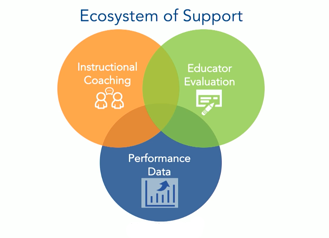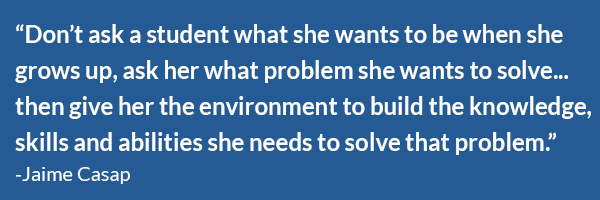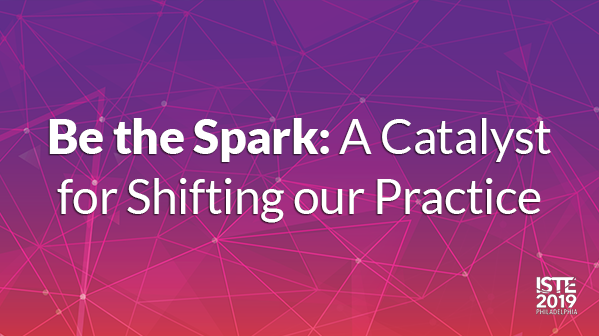Bold educators activate innovation. There it is, hanging from the rafters all throughout the Philadelphia Convention Center for #ISTE19. Each time I came across this banner at the conference, I paused to think about the implications of such a statement. Let’s break this theme statement down: bold is speaking to the ability to not only take risks, but be courageous about it and confident that the action you are taking will lead to positive change.
 Activate, to me, is synonymous with catalyst in which we are looking for the right ingredients to be brought together to move forward. [yes-the role of a specialist + coach is definitely part mad scientist in that we are striving to mix the right ingredients together for a desired reaction!]
Activate, to me, is synonymous with catalyst in which we are looking for the right ingredients to be brought together to move forward. [yes-the role of a specialist + coach is definitely part mad scientist in that we are striving to mix the right ingredients together for a desired reaction!]
Lastly, innovation. This is a tough one as there are so many definitions and interpretations of what it means to be innovative in today’s classroom. More specific to my role as a specialist, innovation is crafting an environment for teachers in which they feel empowered to motivate and inspire their own action. I even mention this very thought from renowned psychologist Edward Deci in a previous blog post around the topic of being a continuous learner.
Taken all together, the theme of ISTE 2019: bold educators activate innovation serves as a reminder to all of us that serve students and teachers. Our job remains focused on finding ways to reach all of our learners. It’s up to us to work smarter, not harder in being challenged, emboldened and inspired in our work and personal growth.
A common tagline of edtech is that it serves as an equalizer in the playing field for students. This is of course a loaded statement in that it brings up the very real issue of equity and accessibility many schools and districts are confronted with, but I like this idea as it relates to transforming teacher practices.
One of the more powerful ways I have been able to “unlock” my own growth in my role and become the bold educator I strive to be has been video. For me, leveraging video has been the activator or catalyst to bring innovation to not only my work, but in a trickle down manner, other educators as well. Let’s stick with the theme of a catalyst and how it can serve as the driving force behind innovation. The catalyst means the thing that sparks change. A catalyst makes a chemical reaction go faster. This is an important piece in the puzzle of driving a wider effort to shift our practice because too often we want this change to occur overnight. It just isn’t going to happen. Instead, leaders should embrace the one rock star or catalyst that has already started the work towards being a continuous learner and explore ways for her/him to share with an audience. Which leads to what I believe is the most important element to have in place prior to exploring the idea of video in a school or district: effective communication.


Connections were plentiful throughout the conference as it relates to the power of video to guide instruction, but one of the most enjoyable interactions came during a session I attended focused on the ISTE Standards. I was struck by a slide that included a quote by Jaime Casap.

This idea again goes back to the idea of creating an ecosystem of support–one that empowers learners. However, upon seeing this slide I immediately substituted the “students” in the quote and replaced it with “educators”. Can’t the same idea also be applied to educators and rethinking the way professional learning is delivered or crafted? I think so! In my experience video has been that very thing. It has served as an integral aspect to build the knowledge, skills, and abilities teachers need to solve a problem. And here is the beautiful part: what that problem is varies from one individual to the next.
With video, teachers own the recording, it’s personal and unique to them. But what it does is help them craft an action plan for growing professionally and attacking an area of growth witnessed in the course of teaching. Yes indeed, bold educators activate innovation. Bold in that we are comfortable in taking risks to explore what video can show us; activators in that we are catalysts of change for guiding our practice; and innovative in that we are in control in solving our own problems as professional educators to me the unique needs of our learners.
Interested to learn how you can best support your educators with video?
Take a few seconds to schedule a quick test drive of our ADVANCEfeedback platform below.







